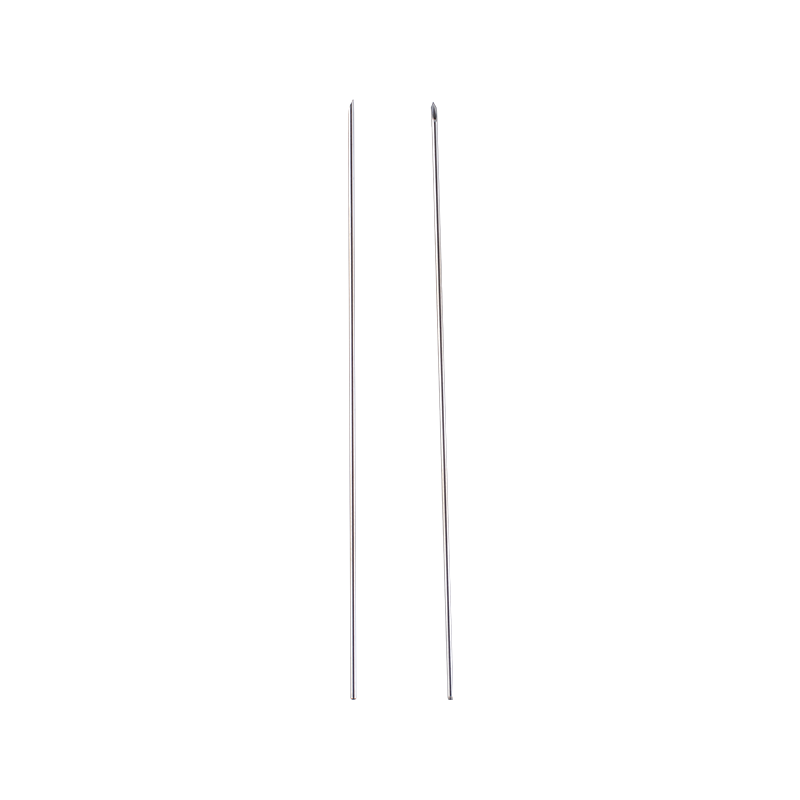+86-0577-86858771
Needles have long been an essential tool in the medical field, playing a crucial role in everything from routine vaccinations to specialized treatments. However, the experience of receiving an injection or blood test can often be associated with discomfort or anxiety for many patients. In recent years, advancements in needle design have aimed to reduce this discomfort and improve overall patient comfort without compromising the effectiveness of the medical procedures. By examining various types of needles such as standard needles, needles for medicine, and lancet needles, we can better understand how innovation is shaping patient care.

Standard needles are perhaps the more familiar type used in healthcare. They come in various sizes and gauges, designed to suit different purposes, such as intramuscular injections, subcutaneous injections, or intravenous access. Traditionally, standard needles were simple in design, with a focus primarily on function rather than patient comfort. Over time, modifications in needle tip geometry and material have contributed to making these needles less intimidating and less painful. For instance, sharper and more refined bevels allow the needle to penetrate the skin more smoothly, reducing tissue trauma and the associated pain sensation. Additionally, coatings on the needle surface can reduce friction, which further eases insertion.
When it comes to needles for medicine, the range is even broader. These include specialized needles designed to deliver medications accurately and safely, with fewer side effects and less discomfort. The medical community has recognized the importance of tailoring needle features such as length, gauge, and flexibility depending on the medication being administered and the target tissue. For example, insulin injections require fine needles with smaller diameters to reduce pain for patients who need frequent dosing. Similarly, needles designed for vaccines are optimized for quick and minimally painful delivery, considering that mass immunization programs require speed and patient tolerance.
Another key innovation in needles for medicine is the development of safety mechanisms that prevent needle-stick injuries while maintaining ease of use. While these features primarily focus on protecting healthcare workers, they can also indirectly contribute to patient comfort by ensuring smoother, controlled injections. The integration of advanced plastics and ergonomic designs in needle hubs helps medical professionals handle needles more confidently, which can translate into a gentler experience for patients.
Lancet needles represent a specialized category of needles typically used in blood sampling and monitoring, such as in diabetes care. Unlike standard hypodermic needles, lancets are designed to prick the skin quickly and precisely, allowing a small amount of blood to be collected with little discomfort. Their small size and sharpness are calibrated to access capillary blood efficiently without causing unnecessary pain or bruising. Innovations in lancet design have focused on adjustable depth settings, enabling users to customize how deeply the lancet penetrates the skin depending on individual needs and sensitivity levels. This feature is particularly helpful for home monitoring devices, where ease of use and comfort are critical for patient adherence.
The development of lancet needles has also involved the use of biocompatible materials that reduce irritation and improve hygiene. Disposable lancets have become standard to less infection risk, and their design encourages single-use to maintain safety. Moreover, the ergonomics of lancet devices have improved, with better grips and simpler mechanisms that reduce the effort needed to perform the prick, thereby lessening anxiety and improving the overall user experience.
Overall, advances in needle design have been driven by the dual goals of maintaining medical efficacy and enhancing patient comfort. The changes in standard needles, needles for medicine, and lancet needles reflect a broader trend in healthcare toward patient-centered approaches. This means that beyond technical performance, attention is given to the emotional and physical experience of patients during medical procedures.
Reducing pain and anxiety associated with needles can advance to better compliance with medical treatments and diagnostic routines. This is particularly important for patients who require frequent injections or blood tests, such as those with chronic conditions. Improved needle designs that prioritize comfort help build trust between patients and healthcare providers, contributing to more positive healthcare experiences overall.
In summary, while needles may seem like simple instruments, the technology behind them continues to evolve significantly. By refining the shapes, materials, and mechanisms of standard needles, needles for medicine, and lancet needles, the medical industry is gradually making injections and blood sampling less daunting for patients. These advancements not only support better clinical outcomes but also emphasize respect for patient comfort and well-being throughout the treatment process.
Wenzhou Kangyu Medical TREATMENT
+86-0577-86858771
+86-13957709138
No. 626 Airport Avenue, Longwan District, Wenzhou City, Zhejiang Province, China
Contact Us